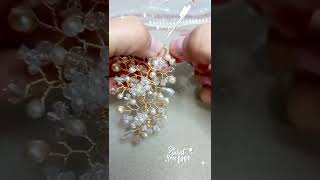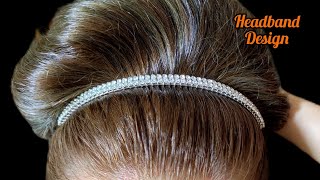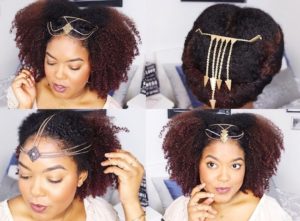Episode 41 The Process Of Making Hair Jewelry
- Posted on 14 July, 2016
- Braids Hairstyles
- By Anonymous
This month's podcast was researched, written, and edited by our summer student, Caitlan.
During Episode 3 (https://youtu.be/oHK7RGOQCgQ), Melissa talked about why Victorians made objects out hair, If you have not listened to it I highly recommended it as this podcast will delve more into the process and types of hair work.
Hello, this is Kaitlyn Madden a summer student at the Oshawa Museum. Thank you for joining us once again for this monthly podcast. During episode, three Melissa talked about why Victorians made objects at a hair. If you had not listened to it, I highly recommend it as this podcast will delve more into the process and types of hair work. Mark Campbell author of the 1867 book self instructor in the art of hair work, dressing, hair, making curls switches, braids and hair jewelry of every description row for children, no art or accomplishment is more useful than the ability to make articles of tasteful ornament and hair work. We need to remember that, although today some people find the idea of creating art and jewelry out of hair creepy, but to Victorians making and giving hair tokens was a sign of friendship, remembrance or even a romantic gesture. Campbell'S book provides a detailed description of every hair work type with illustrations upon further research. It seems there are four main types of hair work table, work, palette, work, safety up, painting and hair flowers table work is done on a small table with a hole in the center and the hair is separated into bundles, with a weight secured to the ends. This work is best used when producing a decorative woven cord, whether it is flat, hollow or solid and later can be incorporated into a bracelet, necklace or watch-chain palette. Work is when the hair is laid flat and glued to a base with shapes, cut out and piece together to form pictures. This technique was best used under glass setting for jewelry, piece designs and palette. Work often resemble feathers and flora, say pierre painting is usually done on glass or ivory and which the paint was made from finely chopped hair. These paintings often depict landscapes or scenes for leading to death and mourning. Lastly, hair flowers, which is done by wrapping the hair around a rod and a fine wire afterwards, can be shaped to form flowers and leaves for most of the braids in Campbell's book. It seems once the braid is completed in order for the hair to hold its new shape. Some steps are required. First, the ends must be braided onto a wire. Then the hair must be boiled in the water for about 10 minutes. Afterwards, the hair is put into an oven to dry the hair out, but must be taken out before burning the hair. Once the hair is dry, the wire can be removed and a little shellac is put on the ends to keep them fastened. The Ottawa Museum currently has two different types of hair wreaths hanging in the parlor of Henri house. One is a larger horseshoe shape with a range of colours wrapped in two floral shapes. The second is a smaller horseshoe shape, which was donated to us in the 1980s. After being passed down from generation to generation, we also have a few types of hair jewelry sitting in the bedroom of Henri house.





Comments
Jetta.Silence: Omg this is my hometown! Im all the way in Newfoundland now. This is very neat to see this. I know these museums well. My mother knew families that lived in the houses before they were ever museums. I look forward to maybe a trip back as i havent been back in 22 years. I will definitely be looking this mourning hair art up as its one of my many interests from the victorian era
Darleen DeHaven: Is there a good video on how to make the hair flowers using the technique mentioned?
Erudite Birdy: They boil the hair to break the sulfur to sulfur bonds in the hair. These bonds make curly hair. Breaking them straightens the hair. When they are cooled these bonds try to reform, setting the shape of the hair in the new style you create. Science is really cool.
Andy Nonymous: I want to learn how to do this stuff